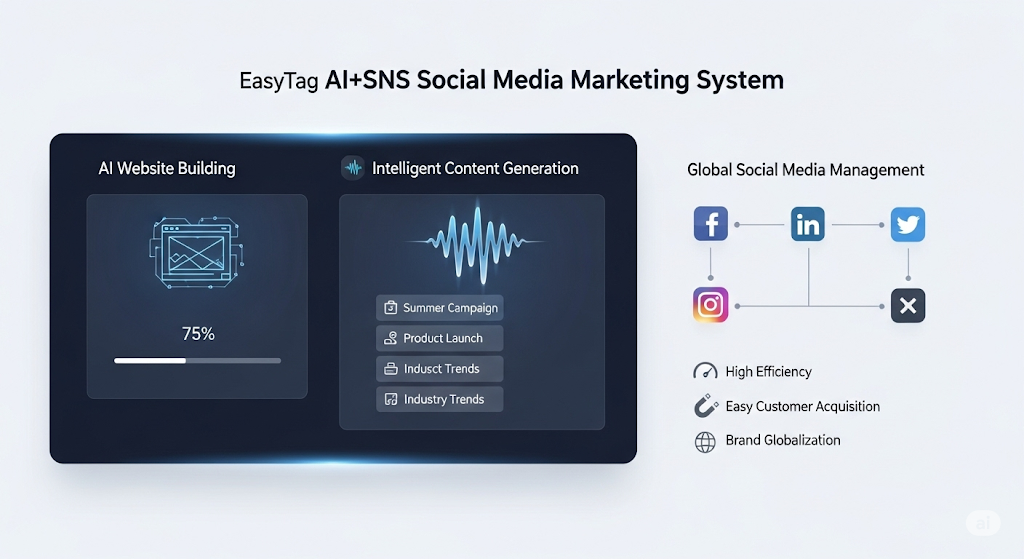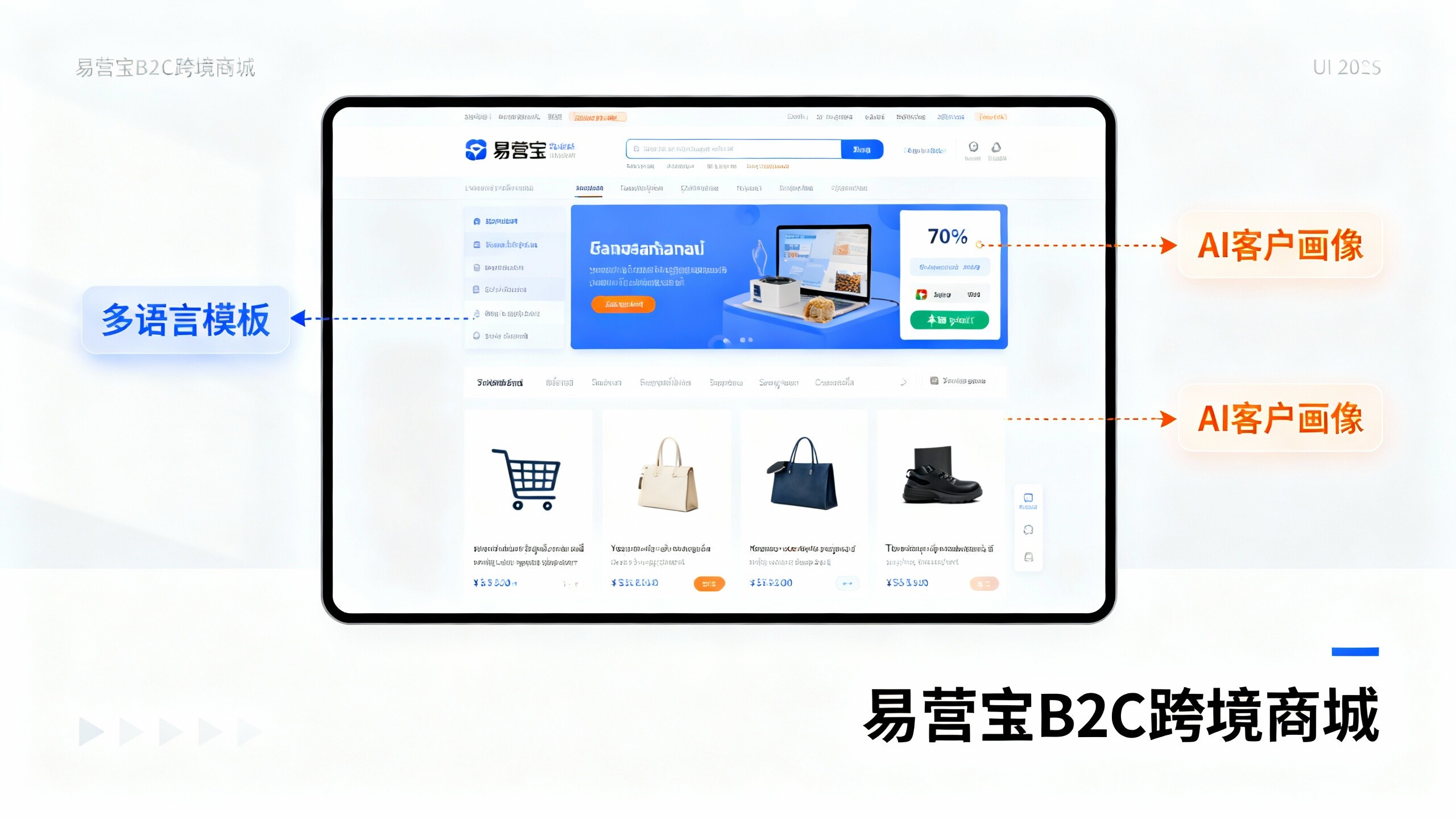- Which is more effective for international trade, a website or a platform? Case comparison: Manufacturing vs. Trading Companies2025-12-25View details
- EasyOperate User Experience: Practical Report on Channel Management for Distributors/Resellers2025-12-25View details
- EasyOperate User Experience: Practical Report on Channel Management for Distributors/Resellers2025-12-25View details
- How to Improve the Conversion Rate of Foreign Trade Websites: 10 Data-Driven Optimization Strategies2025-12-25View details
- KPI Setting and Budget Allocation Template for Operating Overseas Social Media Platforms2025-12-25View details
- Smart Website Market Report2025-12-25View details
- Five Steps to Teach You How to Improve the Conversion Rate of Foreign Trade Websites2025-12-25View details
- What to do if overseas website access is slow? Cross-border acceleration and node deployment practical guide2025-12-24View details
Responsive website SEO optimization: foreign trade responsive website construction of the common 5 big mistakes and repair strategy
This article addresses five common pitfalls in the construction of responsive websites for foreign trade, providing actionable SEO optimization and repair strategies to help SaaS platforms enhance website performance and cross-border marketing effectiveness.

This article is tailored for researchers and users/operators, focusing on practical challenges in SEO optimization for foreign trade responsive websites: slow page loading, missing mobile indexing, duplicate multilingual content, improper URL and domain strategies, and lack of structured data. Each section offers actionable repair steps, prioritized recommendations, and evaluation metrics to help businesses improve natural traffic and conversion rates through website construction and marketing.
Pitfall 1: Mobile-First Without Performance Optimization Leads to High Bounce Rates
In foreign trade responsive website design, many teams optimize visual responsiveness but overlook key mobile performance metrics (e.g., First Contentful Paint, Largest Contentful Paint, Cumulative Layout Shift). When resources are uncompressed, images lack lazy loading, or third-party scripts block rendering, mobile users may bounce within 2-3 seconds, negatively impacting search engine rankings. Solutions include: (1) using adaptive WebP images with lazy loading and placeholder techniques to minimize above-the-fold resources; (2) inlining critical CSS and deferring non-critical CSS, while asynchronously loading third-party scripts; (3) enabling CDN and edge caching to reduce cross-border latency; (4) integrating performance checks into SaaS pre-launch workflows with automated LCP and FID monitoring. These strategies can reduce page load time by 30%-60%, improving rankings and conversions.

Pitfall 2: Incorrect Multilingual Implementation Causes Content Duplication and Indexing Confusion
Foreign trade sites often handle multilingual content poorly through URL parameters or client-side translation, neglecting standalone language paths or hreflang tags. This confuses search engines, leading to duplicate content and incorrect regional indexing. Best practices include: (1) using dedicated URL structures (e.g., example.com/en/, example.com/es/) with complete hreflang annotations; (2) implementing server-side rendering (SSR) or static generation (SSG) with language-specific meta tags; (3) ensuring translation quality matches human standards to avoid machine translation errors. Combining AI translation with local proofreading in SaaS workflows ensures efficiency and quality, boosting multilingual indexing and reducing ranking losses from duplicates.
Pitfall 3: Poor URL and Domain Strategy Dilutes Authority and Risks Brand Protection
Many foreign trade projects lack systematic domain and URL planning, resulting in authority fragmentation (e.g., chaotic subdomains/subdirectories), domain squatting, or secondary market溢价. Recommended actions: (1) establish a domain matrix strategy with a primary domain (brand.com) and language/market subdirectories; (2) register key TLDs and spelling variants preemptively; (3) use professional domain services for bulk registration and auto-renewal alerts. Additionally, enforce URL norms (HTTPS, 301 redirects to preferred domains, avoiding session IDs) to consolidate authority. Proper implementation centralizes search engine rankings and improves marketing ROI.

Pitfall 4: Missing Structured Data and On-Site Signals Loses Rich Snippet Opportunities
Structured data (Schema) is critical for international SEO, helping engines understand product details, company credentials, and contact information to enhance click-through rates. Many foreign trade sites miss this, forfeiting rich snippet traffic. Fixes include: (1) deploying appropriate Schema types (Product, Organization, BreadcrumbList) with complete, real-time data; (2) ensuring language consistency in structured snippets alongside hreflang; (3) adding Open Graph and Twitter Cards to marketing landing pages for social sharing. Prioritizing structured data on high-conversion pages (product details, quote forms) can quickly boost organic clicks and inquiries.
Pitfall 5: Content-Technology Disconnect Fails to Build Sustainable Search and User-Focused Content Systems
A common flaw in foreign trade responsive sites is the separation of technical architecture and content production, hindering long-term keyword rankings despite technical compliance. Effective SaaS platforms should integrate AI-driven topic clustering with multilingual content pipelines, auto-generating SEO metadata. Key steps: (1) establish keyword hierarchies (brand, category, long-tail terms) with templated page structures; (2) leverage smart CMS for scheduled content updates; (3) use performance data (traffic, conversions) for closed-loop optimization. Businesses combining content systems with SaaS tools see steady growth in organic traffic with reduced maintenance costs.
Summary and Action Guide

In summary, foreign trade responsive website SEO requires simultaneous optimization across performance, multilingualism, domain strategy, structured data, and content systems. Each effort should target measurable metrics (load time, indexing, traffic, CTR, conversions) and integrate into SaaS workflows. Our clients achieve 35% higher SEO scores, 40% faster loading, and 200% improved ad CTR through systematic optimization.
For foreign trade responsive website construction or optimization, contact us. Explore solutions or request a free site audit: Domain Services. Start your global growth journey today.
- Campbell (name)
- Intelligent website building system
- SEO optimization
- Intelligent website building
- AI translation
- Enterprise official website
- Website seo optimization
- Website
- SEO optimization effect
- SEO
- responsive website
- Responsive Website Development for Foreign Trade
- Responsive Website SEO Optimization
- Marketing Website
- Corporate Website Development
- Cross-border Marketing
- SaaS Platform Website
- Brand Promotion
Related Articles
![Multilingual Automated Website Construction System Implementation Risks and Common Issue Solutions Multilingual Automated Website Construction System Implementation Risks and Common Issue Solutions]() Multilingual Automated Website Construction System Implementation Risks and Common Issue Solutions
Multilingual Automated Website Construction System Implementation Risks and Common Issue Solutions![Multilingual Automated Website Construction System Implementation Risks and Common Issue Solutions Multilingual Automated Website Construction System Implementation Risks and Common Issue Solutions]() Multilingual Automated Website Construction System Implementation Risks and Common Issue Solutions
Multilingual Automated Website Construction System Implementation Risks and Common Issue Solutions![Arabic Website Construction Solution: Online Strategy and SEO Optimization Key Points for the Middle East Market Arabic Website Construction Solution: Online Strategy and SEO Optimization Key Points for the Middle East Market]() Arabic Website Construction Solution: Online Strategy and SEO Optimization Key Points for the Middle East Market
Arabic Website Construction Solution: Online Strategy and SEO Optimization Key Points for the Middle East Market
Related Products













